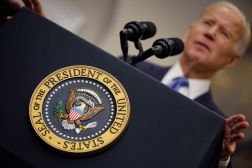Four steps CIOs can take now to prepare for the MGT Act

The Modernizing Government Technology Act passed the Senate on Sept. 18 as an amendment to the fiscal 2018 National Defense Authorization Act. While this is a major step forward towards finalizing one of the most anticipated IT bills, it still has some distance to go. Now the House and Senate must iron out the differences in their respective versions of the defense bill, including the MGT Act, which wasn’t included in the lower chamber’s version of the NDAA. However, the bill is likely to become law before the end of the year.
Federal CIOs should start planning now, to make decisions on how to reprogram their IT investments. Taking action now will help define the baseline needed to define and capture savings that can be reallocated towards innovation under the MGT Act. With potentially more than $500 million available in a central IT modernization fund to improve government services, agencies may apply to borrow from it to fund their projects, with the requirement to repay the money over a five-year period, drawing expected savings from IT modernization initiatives. Areas ripe for these kinds of projects include cloud migration, cybersecurity and digital transformation.
Here are four key steps CIOS can take today to prepare for fiscal 2018 and the MGT Act.
Step 1: Inventory Assets
President Trump’s proposal for the 2018 budget notes that more than 70 percent of agency IT spending focuses on legacy systems. CIOs should inventory these systems, noting which should be improved and which retired. Their focus should be on determining which systems are key to fulfilling their agency’s mission versus systems that are operational in nature and lend themselves to a shared services approach (for example, travel or cybersecurity). As part of this inventory, CIOs will need to work to achieve alignment across their business/functional groups, IT organizations, and CIO/CFO teams.
Step 2: Ensure that Current Baseline Spending is Appropriately Categorized and Captured
Categorizing baseline spending appropriately is important now, because future savings will be determined in comparison to current costs. For example, if an agency plans to automate a current manual process, the agency should capture and measure the contractor or labor costs associated with that manual process now, so that post-investment contractor or labor cost reductions can be accurately determined, and treated as savings that are available to pay back the investment.
Step 3: Identify Best Projects with Proof of Concept
Moving forward, CIOs will need to manage their IT assets via a business case approach, meaning they will need to demonstrate a positive return on investment for their projects. This focus on driving value will enable them to identify the best projects to tackle, ensuring that they will, in fact, be able to achieve savings and thus repay the invested funds. CIOs will need to answer questions about whether it is better to completely “rip and replace” systems or take a phased approach. Will they move to the cloud? To a hybrid system? They will need to do a full cost analysis (both savings and cost avoidance) and anticipate the impact of their choices to the public. Furthermore, they will need to address the risk of not modernizing with the gains of efficiency with reduced time/spending. All of this will demand collaboration with their CFOs to take advantage of long-term procurement.
Step 4: Use Resources from Across Government and Industry
The MGT Act frees CIOs to make decisions that will result in greater innovation in the delivery of government services, but also demands new approaches driven by a business mindset with enhanced responsibilities for governance and communications. Furthermore, there will be new opportunities to forge partnerships with industry, to increase transparency and accountability, and share knowledge and resources. Together, government and industry can work together to modernize and streamline processes so agencies can better focus on their core mission to provide important services to American citizens.
Nicolas Ojeda is a principal business analyst and Eric Co is a project manager at REI Systems.






